Building a $400 Low-cost Gaming PC in 2018
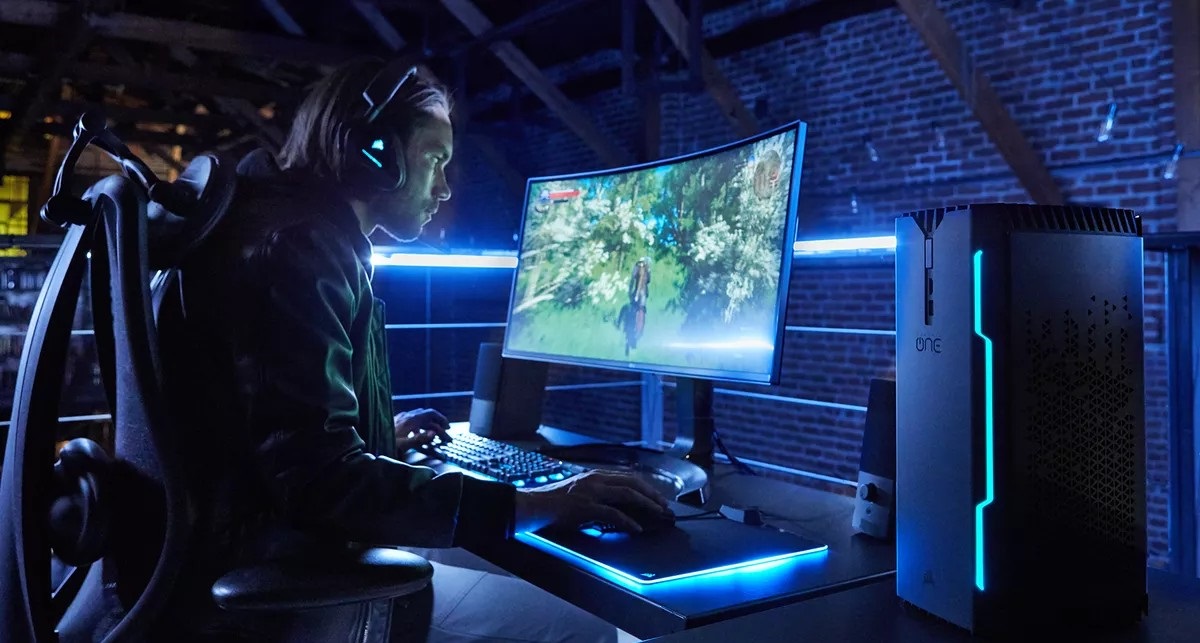
Processor with integrated graphics
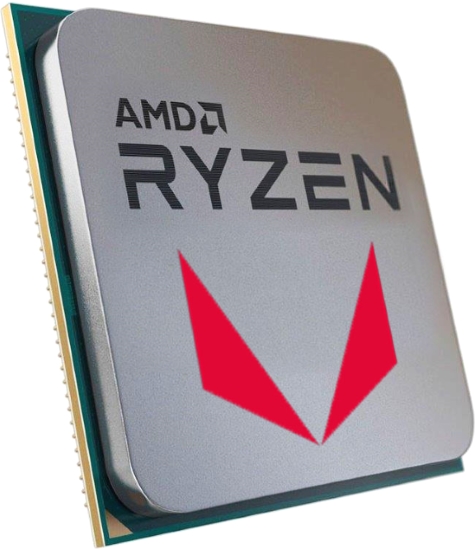
In the second iteration of the Ryzen 3 processors, AMD decided to replace conventional processors without an integrated graphics card with APU chips with powerful Vega graphics, thereby making them more attractive for building office and even entry-level gaming PCs. So, the Ryzen 3 2200G received four cores of the Zen + architecture without support for SMT technology (that is, the number of threads is equal to the number of cores) and a 512 micro-core Vega 8 graphics accelerator (performance is approximately in the middle between the GeForce GT 730 and GT 1030).
The balance between the performance of processor and graphics cores is perfectly balanced (nothing pulls the "blanket" over itself), which makes the Ryzen 3 2200G a suitable economy solution for fans of lightweight multiplayer games: Dota 2, World of Tanks and Counter-Strike Global Offensive. All of these games will deliver 60+ FPS at FullHD resolution and medium-high graphics settings. And at 720p, at minimum wages and at 30-40 FPS, you can play not only GTA 5, but even The Witcher 3. It was Vega 8 that became the first integrated graphics card that pulled the final part of the adventures of Geralt of Rivia (and therefore all other games until 2015 inclusive).
Despite the absence of metal solder under the heat sink cover (thermal paste is used instead), the Ryzen 3 2200G overclocks well manually (only on motherboards with the B350 chipset and higher): from the base 3.5 to 4 GHz for CPU and from 1150 to 1500 MHz for the graphics card. Both will allow you to add a few free FPS in games. However for this you will have to replace a simple box cooler with a larger tower one.
As a result, at a price of $125, the Ryzen 3 2200G chip turned out to be much more interesting in terms of the performance ratio of processor cores and integrated graphics than the similarly priced Core i3-8100. We recommend it to those who want to spend the first time without a discrete graphics card, but at the same time not deny themselves games. The 2200G, like other Raven Ridge chips, has perhaps only one drawback — the narrow PCI-E x8 bus limits the use of powerful video cards (enough for the GeForce GXT 1050 Ti, but not for the GTX 1060).
Motherboard
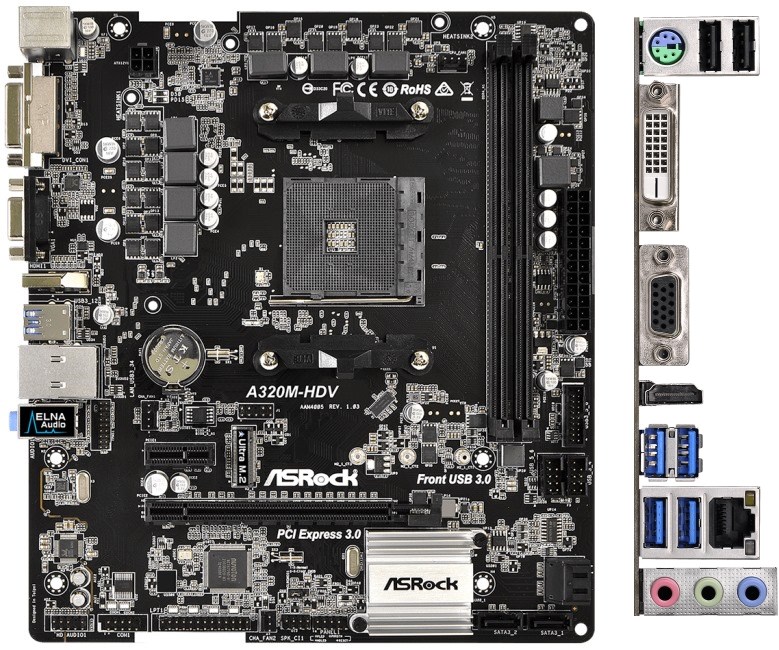
Most low-cost motherboards for the AMD AM4 platform, based on the junior A320 chipset, support DDR4 RAM with a frequency of less than 2666 MHz. But the high frequency of RAM is critical for AMD Ryzen processors, especially for models with an integrated graphics card. Fortunately, the ASRock A320M-HDV motherboard supports RAM strips with a frequency of up to 3200 MHz (in the case of two channels, the frequency will be lower — 2933 or 3000 MHz).
The ASRock A320M-HDV does not have a radiator on the power circuit, but it is not required, because motherboards on the A320 still do not support processor overclocking, that is, you don’t have to worry about possible overheating of the mosfets. The PCI-E x1 slot for network and sound cards is prudently placed higher than x16. Otherwise, it would be covered by a large graphics card. Video outputs on the rear interface panel are complete: HDMI, DVI and VGA.
The disadvantage of the ASRock A320M-HDV is traditional for low-cost motherboards — only two RAM slots. This puts the buyer in front of a difficult choice, what is better to take: two small-capacity RAM modules for increased performance, or one large-capacity module to leave a free slot for a future upgrade. In addition to Ryzen, this motherboard also supports ultra-low-cost Bristol Ridge processors, which makes it a good option for building an office PC or home theater.
Two 4 GB RAM modules
Intel Core processors are unpretentious in terms of RAM and are compatible with almost all modules with Micron, Hynix and Samsung chips, with the exception of specialized server registered memory. Another thing is AMD Ryzen processors. Of course, they work with RAM sticks based on Micron and Hynix chips, but they are slower and, in some cases, less stable than with Samsung.
The most profitable option is Samsung DDR4 memory with B-die series chips (they are marked like K4A***B). These modules are cheap, but at the same time they are highly likely to overclock from 2400 to 2933 or, if you're lucky, even 3000 MHz. At the same time, do not be embarrassed by the lack of metal radiators — even after overclocking, DDR4 memory heats up weakly. Radiators, on the other hand, perform rather a decorative function, and their absence will only become a problem for modders who assemble a PC in a case with a transparent side wall.
At the same time, note that two memory modules give the best performance, which corresponds to the number of channels of the RAM controller built into the Ryzen processor. Whereas in the case of four channels, the processor is forced to lower the frequency (the same applies to dual-rank memory with two virtual channels on one bar). Simply put, if you want to get the most performance out of Ryzen processors, buy Samsung DDR4 or other brands of peer-to-peer memory, but based on Samsung B-die chips (some GeiL, Corsair, G.Skill models).
HDD

WD Blue 3.5-inch terabyte hard drives come in two varieties: the 5400 rpm WD10EZRZ and the 7200 rpm WD10EZEX. The first is quieter, colder, but also slower (up to 150 MB / s), therefore it is used mainly as a capacious file storage that complements SSD. The second — WD10EZEX — is noisy, but noticeably faster (up to 180 MB / s), therefore it is suitable for the role of the main and only disk on which the operating system, applications and games will be installed.
Sure, the WD10EZEX is no match for an SSD, but if you're on a tight PC build low-cost, you can't complain. After all, even a 120 GB SSD costs more than a terabyte hard drive. And games in recent years have begun to weigh, oh, how much. For example, GTA 5 and NBA 2K18 "weigh" 70 GB, while Call of Duty World War II and Forza Horizon 3 weigh more than 100 GB. A gamer cannot do without a hard drive now.
In addition to the Blue series, WD's range includes Red and Black models, both with extended warranties from two to three years. The first is low-speed 5400 rpm with an emphasis on data storage reliability, and the second is, on the contrary, the fastest 7200 rpm and 200+ MB / s. Nevertheless, due to the best ratio of price, speed and capacity, it is WD Blue that has been the most popular HDD for many years.
Power Supply
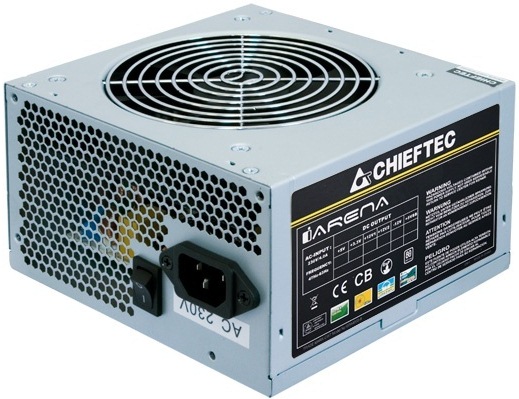
| Telemart.ua | 1 569 ₴ | To Store |
| Stylus.ua | 1 633 ₴ | To Store |
| Tviy-Dim.com | 1 758 ₴ | To Store |
| ШО | 1 662 ₴ | To Store |
| Q-techno.com.ua | 1 804 ₴ | To Store |
The Chieftec iARENA GPA-500S8 is an updated version of the GPA-500S power supply. The main innovation was increased efficiency to 80 percent, now corresponding to the 80 PLUS standard (not to be confused with 80 PLUS Bronze). Simply put, less electricity is wasted now. The old and new models are easy to distinguish by the colour of the sticker: black is now used instead of yellow.
Of the total 500 W, the Chieftec iARENA GPA-500S8 delivers 396 W of electricity through the +12 V line. At the same time, the line is divided into two virtual channels: up to 24 A for CPU and motherboard and up to 21 A for the graphics card (but not more than 33 A at the same time). In a simple PC, the fan is almost inaudible, and under a load of up to 350 W, the noise level can be described as average.
As a result, the power of the Chieftec iARENA GPA-500S8 is enough to power a gaming PC even with an overclocked Core i7 or Ryzen 7 processor and any one graphics card, with the exception of the most power-hungry Radeon RX Vega 64. But given the presence of only one 8-pin power connector for video cards, an adapter with Molex may be required. But for CPUs of Core i9 and Threadripper processors, it is better not to use this PSU. Through one 4-pin connector, these processors can be powered, but there is a high probability of wire melting (it is safer to connect via 4 + 4-pin). In addition, the processor cable is relatively short (38 cm), so the iARENA GPA-500S8 is better suited for top-mounted PSU cases than bottom-mounted ones.
Frame
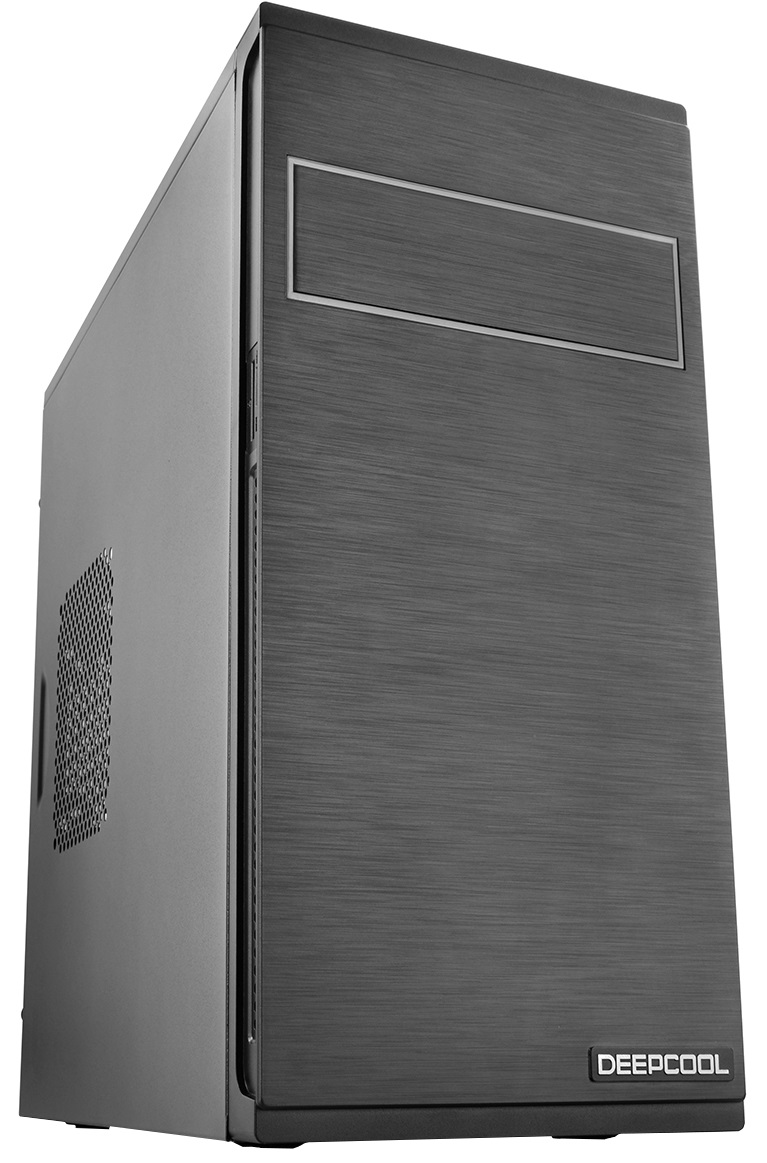
Until recently, the most compact cases Deepcool were Smarter and Smarter LED(the second is equipped with a pair of luminous fans). Now, in addition, they have come out with an even more compact, conservative design and, which is especially nice, a cheap Deepcool Frame case. It is intended for both mini-ITX miniature motherboards and micro-ATX medium-format motherboards. Large format ATX is not supported.
The power supply is placed full-sized and mounted on top, thereby participating in the air circulation inside the PC, which partially compensates for the lack of complete fans. But for hot builds (with a 100+ W processor and a 200+ W graphics card), we still advise you to buy a couple of propellers : 12 cm for the front and side panels and 8 – 9 cm for the back.
A processor cooler can fit less than 145 cm high. Simply put, a large tower will not fit, but a small one a la Thermaltake Contac 21 will do. There are two seats for 2.5-inch SSDs, three for 3.5-inch HDDs, and theoretically two for 5.25-inch DVDs, but there is only one cutout on the front panel (a strange decision). A nice bonus are as many as three USB ports on the front panel (of which only one is USB 3.0) and a built-in card reader. Given all of the above, we recommend Deepcool Frame for building inexpensive and not very hot PCs based on mini-ITX and micro-ATX motherboards.
Linux is easier to set up and more secure than Windows.
For what tasks are supercomputers with a capacity of tens of petaflops used?
Twelve-year history of Intel in one article.
How AMD processors have evolved from 2006 to the present.
Irreplaceable helpers in keeping hot drinks warm and cold drinks cold for a long time.

















